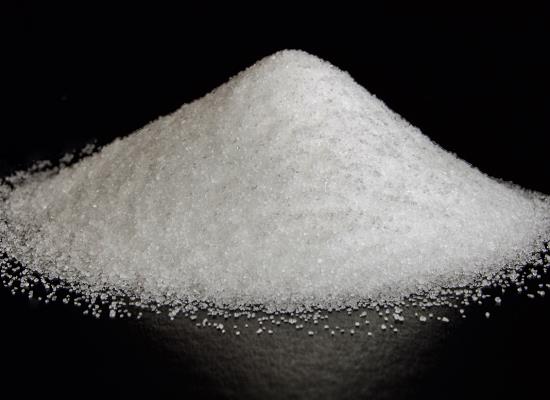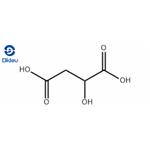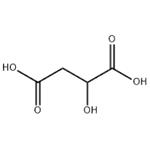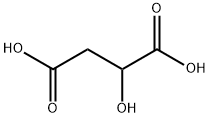Malic acid: Significance and its Quantifying Methods
General Description
Malic acid, a key organic acid in fruits and vegetables, plays crucial roles in various industries. Its use as a food additive and in consumer goods highlights its versatility. The global market for DL-malic acid is substantial, reflecting its economic importance. Monitoring malic acid levels is vital in food production and agriculture for taste and quality control. In winemaking, it influences flavor and aging. Quantifying malic acid is essential, with biosensors offering cost-effective and user-friendly solutions. While traditional methods have limitations, the development of biosensors, particularly electrochemical ones, shows promise for in-field and factory measurements.

Figure 1. Malic acid
Significance
Malic acid, the principal organic acid found in numerous fruits, vegetables, and their juices, holds significant importance across various industries. Widely utilized as an additive (E 296) in food and beverages to regulate pH levels and impart a tangy flavor, its versatility extends beyond culinary applications. In household products like lotions and cleansers, malic acid serves as a buffer and chelator, showcasing its utility in diverse consumer goods. Moreover, it serves as a fundamental building block for polymer synthesis, highlighting its role in industrial processes. The global market for DL-malic acid, including both naturally occurring and synthetically derived forms, is substantial, reflecting its widespread use and economic significance. Ranging from 60,000 to 200,000 tonnes per annum, with corresponding market values of US$105-350M, its demand underscores its commercial importance. In food manufacturing, meticulous monitoring of malate anion concentrations is paramount to achieving desired taste profiles and ensuring product freshness. Deviations in malic acid levels can impact flavor balance and microbial stability, emphasizing the need for precise measurement and control. Beyond food production, malate concentration serves as a critical indicator in agricultural practices, aiding horticulturists in timely harvesting decisions. Variations in malic acid content during fruit and vegetable development inform cultivation strategies, optimizing harvest timing and quality. In winemaking, malic acid plays multifaceted roles, influencing grape ripeness, flavor characteristics, and aging potential. Its dynamic concentration profile during grape maturation guides viticulturists in determining harvest timing and monitoring fermentation processes. Furthermore, malic acid profiles serve as tools in combating food fraud, particularly in verifying the authenticity and quality of fruit juices. By assessing malic acid ratios and other biomarkers, authorities can detect adulteration and ensure product integrity, safeguarding consumer interests. Overall, malic acid's significance spans various sectors, from food and beverage to agriculture and consumer goods, underpinning its indispensable role in diverse applications and industries. 1
Quantifying Methods
Quantifying malic acid in the food and beverage industry is crucial for various reasons, yet traditional methods like high-performance liquid chromatography require significant investment, specialized reagents, and technical expertise, making them impractical for field and factory settings. While simpler alternatives like paper chromatography exist, they often provide only qualitative results. Recognizing the need for inexpensive and user-friendly quantification methods, researchers have turned to biosensors. These devices offer real-time measurements, high selectivity, and rapid response times, making them ideal for in situ applications. Drawing inspiration from successful examples like blood glucose biosensors, which dominate the biosensor market, scientists have explored electrochemical sensors for malic acid detection. Among electrochemical sensors, amperometric biosensors, which measure current, are the most common for malic acid detection. However, there are comparatively few potentiometric sensors, and impedimetric and conductimetric sensors for malic acid have yet to be developed. This preference for amperometric sensors may stem from their perceived higher sensitivity compared to potentiometric alternatives. Notable exceptions to electrochemical sensors include an enzyme-based calorimetric sensor and an engineered bacterial system linked to green fluorescent protein production in response to malic acid. These innovations highlight the diverse approaches researchers are exploring to create effective malic acid quantification methods. In conclusion, while traditional quantification methods for malic acid are challenging to implement outside of laboratory settings, the development of biosensors, particularly electrochemical ones, shows promise for providing cost-effective, user-friendly, and accurate solutions for in-field and factory measurements.In this review, we summarise the progress towards marketable malic acid biosensors and the limitations that remain to be overcome before they are likely to enter widespread use. Given their prevalence in the literature, and the advantages discussed above, we focus on enzyme-based amperometric biosensors. 1,2
Reference
1. Matthews CJ, Andrews ESV, Patrick WM. Enzyme-based amperometric biosensors for malic acid - A review. Anal Chim Acta. 2021; 1156: 338218.
2. Grieshaber D, MacKenzie R, Vörös J, Reimhult E. Electrochemical Biosensors - Sensor Principles and Architectures. Sensors (Basel). 2008; 8(3): 1400-1458.
Related articles And Qustion
See also
Lastest Price from Malic acid manufacturers

US $0.00-0.00/KG2025-11-19
- CAS:
- 6915-15-7
- Min. Order:
- 1KG
- Purity:
- 98
- Supply Ability:
- 10000KGS

US $1.50/g2025-06-25
- CAS:
- 6915-15-7
- Min. Order:
- 1g
- Purity:
- 99.0% Min
- Supply Ability:
- 10 Tons





